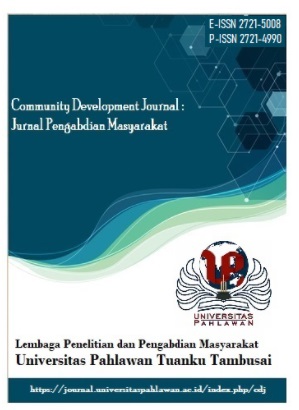ENHANCHING FLIGHT ATTENDANT STUDENTS' ENGAGEMENT THROUGH THE DST APPROACH AT MULIA ANGKASA ACADEMY CIREBON
DOI:
https://doi.org/10.31004/jrpp.v7i4.38799Keywords:
Digital Storytelling, Interaktivitas Mahasiswa, Pendidikan PramugariAbstract
Kelas aktif dan sehat, baik secara offline maupun online, seharusnya menjalankan dua arah komunikasi secara simultan untuk menyeimbangkan komunikasi antara dosen dan mahasiswa di dalam kelas. Dalam menjalankan komunikasi pembelajaran, mahasiswa memiliki tanggung jawab untuk mengantisipasi kekosongan atau kurangnya lingkungan komunikatif selama proses belajar-mengajar. Digital Storytelling adalah pendekatan yang dapat digunakan oleh dosen dalam pengajaran untuk meningkatkan interaktivitas mahasiswa karena metode ini menantang mereka untuk berbicara secara individu, dapat berbicara secara acak, dan memberikan kesempatan bagi semua orang untuk berbagi cerita mereka tentang topik tertentu. Dalam penelitian ini, peneliti ingin mengamati bagaimana pendekatan Digital Storytelling dapat meningkatkan interaktivitas mahasiswa jurusan pramugari. Metode penelitian yang digunakan oleh peneliti adalah narrative inquiry, yaitu untuk merekam aktivitas dan pengalaman individu atau kelompok kecil yang berkaitan dengan cerita yang dibagikan oleh objek penelitian. Ada beberapa hal penting yang mendasari penelitian ini; salah satunya adalah dengan menerapkan pendekatan Digital Storytelling, mahasiswa pramugari merasa tertantang oleh dosen untuk berbicara, dan hal ini merangsang inisiatif mahasiswa untuk berbagi pengalaman mereka secara digital.References
Ahmed, R., Zhang, J., & Lee, S. (2023). Motivation through AI gamification: A study on language learning platforms. Computers & Education, 194, Article 104695. https://doi.org/10.1016/j.compedu.2023.104695
Alabbasi, D. (2018). The design and application of a digital storytelling process model to enhance teachers’ understanding of TPACK and foster positive attitudes toward teaching with technologies. International Journal of Technology Enhanced Learning, 10(4), 309. https://doi.org/10.1504/ijtel.2018.095142
Aliyu, J., Osman, S., Kumar, J. A., & Jamil, M. R. M. (2023). The design and development of a learning strategy to enhance students’ engagement in simultaneous equations: An evaluation viewpoint. Journal of Technology and Science Education, 13(1), 36. https://doi.org/10.3926/jotse.1691
Çetin, E. (2020). Digital storytelling in teacher education and its effect on the digital literacy of pre-service teachers. Thinking Skills and Creativity, 39, 100760. https://doi.org/10.1016/j.tsc.2020.100760
Fathi, J., & Afshari, S. (2021). Promoting inclusivity in language education through AI tools. Language Learning & Technology, 25(2), 65–79. https://doi.org/10.1111/j.2041-0970.2021.03165.x
Fredricks, J. A., Blumenfeld, P. C., & Paris, A. H. (2004). School engagement: Potential of the concept, state of the evidence. Review of Educational Research, 74(1), 59–109. https://doi.org/10.3102/00346543074001059
Harun, S. A., Yusof, J. N., Ibrahim, A., & Abdullah, N. (2015). Rationalizing the limitation of passive students through contextual teaching. Journal of Management Research, 7(2), 295. https://doi.org/10.5296/jmr.v7i2.6953
Hooda, M., Mehra, S., & Chauhan, R. (2022). AI for real-time feedback and success in educational systems. Computers in Human Behavior, 128, Article 107123. https://doi.org/10.1016/j.chb.2021.107123
Huang, X., Sun, Y., & Wei, Z. (2023). Trends in AI-assisted language learning: A comprehensive review. Technology, Knowledge, and Learning, 28(3), 305–325. https://doi.org/10.1007/s10758-022-09501-2
Hussain, H., & Shiratuddin, N. (2016). The digital storytelling process: A comparative analysis from various experts. In H. Hussain & N. Shiratuddin (Eds.), AIP Conference Proceedings. American Institute of Physics. https://doi.org/10.1063/1.4960884
Kim, S., & Park, H. (2020). Enhancing communication skills through vocational education: A flight attendant training case study. Journal of Vocational Education Research, 43(2), 120–134. https://doi.org/10.21500/25225235.5406
Lambert, J. (2013). Digital storytelling: Capturing lives, creating community (4th ed.). Routledge.
Maggi, S. B., & Lana, V. N. (2007). Narrative inquiry: Theory and practices. Journal of Geography in Higher Education. https://doi.org/10.1080/03098260601071324
Murray, G. (2009). Qualitative inquiry in applied linguistics (pp. 45–65). In Qualitative Inquiry in Applied Linguistics (pp. 45–65). Palgrave Macmillan. https://doi.org/10.1057/9780230239517_3
Robin, B. R. (2008). Digital storytelling: A powerful technology tool for the 21st-century classroom. Theory Into Practice, 47(3), 220–228. https://doi.org/10.1080/00405840802153916
S. A. A., Mohamed, M., Haya, M., & Yacoub, H. (2020). The effect of using digital storytelling on developing active listening and creative thinking skills. European Journal of Educational Research, 10(1), 13. https://doi.org/10.12973/eu-jer.10.1.13
Smeda, N., Dakich, E., & Sharda, N. (2014). The effectiveness of digital storytelling in the classrooms: A comprehensive study. In N. Smeda, E. Dakich, & N. Sharda (Eds.), Smart Learning Environments, 1(1). Springer Nature. https://doi.org/10.1186/s40561-014-0006-3
Williyan, A. (n.d.). Do we need questionnaire and interview in statistical research? How important is it in contributing to statistical research? Journal Name (if available). [Publisher].
Zawacki-Richter, O., Marín, V. I., Bond, M., & Gouverneur, F. (2019). Challenges and opportunities of AI in education: A systematic review. International Review of Research in Open and Distributed Learning, 20(3), 40–59. https://doi.org/10.19173/irrodl.v20i3.4096
Downloads
Published
How to Cite
Issue
Section
License
Copyright (c) 2024 Lili Sururi Asipi, Rachma Nurfadilla

This work is licensed under a Creative Commons Attribution-ShareAlike 4.0 International License.






